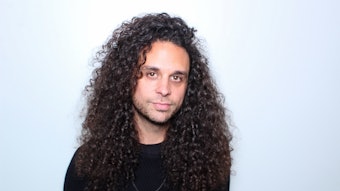
“What outcomes take precedence when evaluating efficacy? Do consumers in CE states experience fewer injuries? Do licensees generate fewer citations/fines and enjoy longer, more lucrative careers? What’s the standard for quality CE in our industry?”
Despite the potential to transform our industry and improve outcomes, continuing education (CE) has been underutilized. As an expert educator who’s achieved a terminal degree (Ph.D in education) and held teaching credentials that require CE for renewal, this baffles me.
If protecting consumers remains the stated purpose of licensure, why doesn’t every state rely on CE to inform changes in our industry and the regulatory environment?
Many outside our industry, including legislators and consumers, presume that the initial training provided by beauty schools produces students capable of passing the licensing examination and working competently and safely. Aspiring nail pros spend as few as 100 hours (Connecticut, enacted 2020) or as many as 750 hours (Alabama) to qualify for examination. In contrast, hair pros spend as few as 1000 hours (Texas and New York) or as many as 2300 hours (Oregon) to qualify for their cosmetology license.
If this presumption were true, why do so many students fail the exam on their first attempt? And when licensed, why do so many lack basic skills and fail to follow health and safety regulations? The lack of compliance in our industry suggests that either students didn’t learn what to do or weren’t convinced that compliance wasn’t optional. If it’s not true, what will a few hours of CE every two years accomplish after hundreds of hours spent in beauty school?
Do states that require CE like Texas, Illinois and Ohio have better informed and more competent licensees than states that do not like California and New York?
Coming from a state without CE, I don’t ask these questions facetiously. Whether our respective states require CE or not, we should challenge the way mandated courses of study (clock hours in beauty school) serve primarily as a barrier to entry into our profession when education should facilitate learning on a continual basis.
Approved CE would update all licensees on new regulations, best practices, advanced techniques and product innovations. Given the inconsistent quality of beauty schools, CE could remediate and compensate for gaps in knowledge. Ultimately, consumers would be safer and licensees more competent if current training were required. Moreover, it would promote an ongoing, cooperative relationship between state boards and their licensees.
Especially now that efforts to deregulate beauty professionals have intensified, CE must be part of the discussion.
To be fair, however, many questions remain unanswered and deserve consideration:
How do we measure success? What outcomes take precedence when evaluating efficacy? Do consumers in CE states experience fewer injuries? Do licensees generate fewer citations/fines and enjoy longer, more lucrative careers? What’s the standard for quality CE in our industry? Does any state have the ideal program? What other professions could serve as a model? How many hours should be required? Will states agree to a national standard or accept courses from other states?
What topics qualify? What’s the appropriate balance among topics: technique, business and regulatory (health and safety, domestic violence and sexual assault awareness, etc.)? Does the state require approval of individual courses? How much information about the course content is necessary? Does the content need to be brand-neutral? What topics would be universal for all license types? Is there any particular content that must be included in every course?
What’s the process for becoming a provider? What are the qualifications of the provider? Does a provider have to be licensed or have a physical presence in the state? Can a provider use any educator to present a course, or does the individual educator need pre-approval? Should the state list approved courses online, or just links to the providers? What disclosures should providers include when promoting approved courses? Under what circumstances would approval be revoked?
What’s the most efficient way to present courses? What instructional methods are allowed? Does the course need to be delivered in person or can it be completed online? How do providers confirm attendance or ensure mastery of the content? What developments in higher education, like massive open online classes (MOOCs), can be applied to our large population of professional licensees?
What are best practices for administration of CE? Does the state limit course approval to a particular day and time? Who’s responsible for reporting completions? How does the state receive notification that a licensee has completed a course? How do licensees verify completion? How does the state protect licensees against fraud? Is there a review or complaint process to address course quality or other issues?
What barriers does CE present? What are the administrative costs and should provider fees fund them? Does the state charge a reporting fee for submitting student names? What course fees can a provider charge? How can more CE be provided at no cost? Should licensees of a certain age be exempt from CE?











